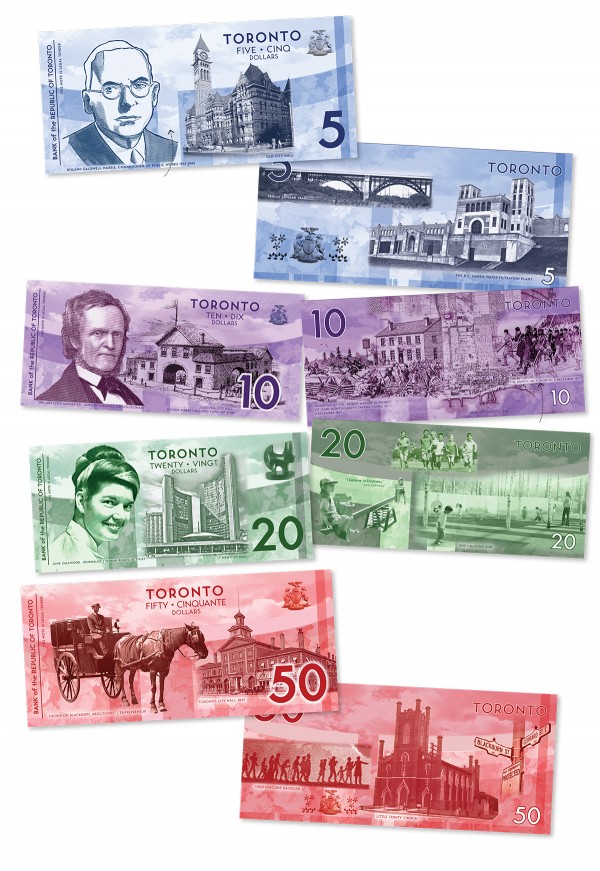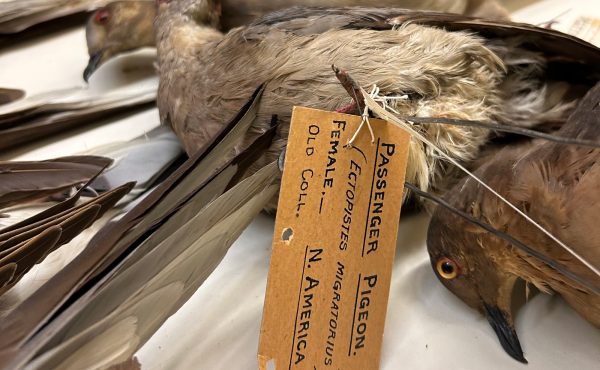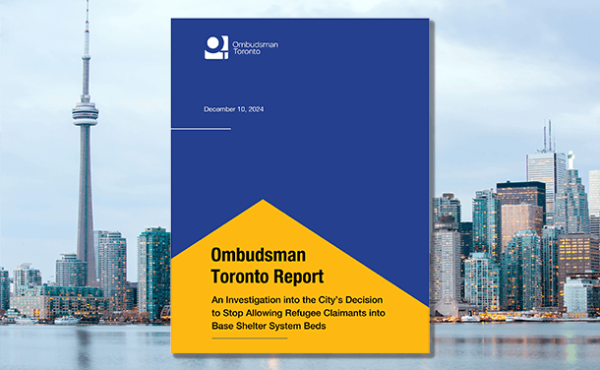This feature appears in the current print edition of Spacing magazine, summer 2013. Buy it on newsstands now.
There has been the occasional chatter of Toronto opening its own bank (or even forming it’s own province), but Spacing has taken that thought one step further. What if Toronto were its own republic with its own currency? We challenged graphic artist Marc Ngui to explore the possibilities.
![]()
DOWNLOAD: We’ve created a PDF of the bills for your amusement. Please note the bills are not legal tender.
BUY AS FRIDGE MAGNETS: We’ve converted the front of the bills into thin fridge magnets. Buy them now.
![]()
$5 Bill
The main figure in the Republic of Toronto’s $5 bill is R.C. Harris. He is considered one of the city’s most important and visionary city builders for creating integral pieces of civic infrastructure, such as the Prince Edward Viaduct (opened 1918), which was constructed with a built-in carriage for a subway line that wouldn’t be in use until 1966. The R.C. Harris water filtration plant, at the foot of Victoria Park Avenue, was the most advanced purification facility in North America when it opened and made Toronto a world leader in public health. DESIGN FEATURE: The current Toronto flag is used in the background of each of the bills, along with maple leaves.
$10 Bill
William Lyon MacKenzie was elected the City of Toronto’s first mayor in 1834 and adorns our $10 bill. In his early years in Upper Canada, he was a publisher of the Colonial Advocate and a staunch reformer who worked to unseat Toronto’s established Family Compact. In his post-mayoral years, he would start another newspaper, The Constitution, and eventually lead a rebellion in 1837 in which his supporters marched down Yonge Street only to be met and quelled by British soldiers. After years of living in exile in the United States (1838-1849) he returned to Toronto and kept up his rabble-rousing ways until he died in 1861 at his home at 82 Bond Street. He is buried in the Toronto Necropolis cemetery just north of Cabbagetown. DESIGN FEATURE: All of the words and numbers are displayed in the font used by the TTC on subway station platform walls
$20 Bill
This bill features June Callwood one of Canada’s most prominent female journalists in both print and television. Her work often focused on social justice issues, especially pertaining to the rights of women and children. A laneway near Broadview Avenue and Queen Street East is named after her. June Callwood Park, just south of Fort York, is a children-themed park, set to open in 2013.
$50 Bill
Thornton Blackburn and his wife Lucie were escaped slaves from Louisville, Kentucky, who eventually settled in Toronto after a harrowing journey through the Underground Railroad. Their heroism more than earns them a place on our $50 bill. In 1837, Blackburn built and operated his own red and yellow box cab named “The City,” which was drawn by a single horse and able to carry four passengers. The Thorntons were active in the anti-slavery movement and helped other escaped slaves settle in Toronto and other Ontario towns.
illustrations by Marc Ngui





7 comments
Interesting idea for a local currency, although Toronto has had community currencies before. Pity there was no mention of that here, nor was there any mention of alternative currencies like Canadian Tire money. The symbolism is okay but a little expected, featuring historical figures from the city’s progressive past, mixed with architectural details and official heraldry.
Curious: why use an old fashioned way of visualizing our collective history? With etchings in awkward layouts interspersed with type? If no contemporary graphic language (for a contemporary city!) can be brought to bear on a Toronto currency, at least rock the historical layouts. These ones are as clumsy as the new Canadian bills. Such a pity!
Well, at least there’s no angry Queen Elizabeth backed by military boasting and semi-nude statues!
I immediately thought the photo on the $20 was Marilyn Bell, one of Toronto’s most famous athletes.
Why June Callwood for heaven’s sake?
You forgot the $1 bill, with Rob Ford’s portrait on it. Then remove it from circulation to save on the costs to make it, like they did with the Canadian dollar bill.
What is Tate talking about?!!?
These are terrific! Love all the details like the Toronto flag in the background, the use of French as a nod to our settler past, and the fact that you used Thornton Blackburn. Great selection of people. and I love that the idea is riffing on current Canadian money. To argue Tates point, money is about history, not contemporary times. The woodcuts are a great touch and the use of the TTC is more than apt. There is nothing clunky abou these!Amazing job Marc Ngui! I’ve downloaded the PDF and want to psyche out my friends with fake print outs.
I know I’m not an editor but to respond to George’s comment: I’m glad it’s not Marilyn Bell; she did a phenomenal thing once but June Callwood did amazing work for 50 years. she is Canada’s most accomplished female journalist, broke glass ceilings, advocated for kids rights, and gave human rights issues the attention it deserved. She is one of the city’s greatest citizens of all time. I’d be sad if she wasn’t included.
Is there no $100 because many merchants in Toronto don’t accept them and would prefer that you use debit/credit?
“Republic of Toronto”? I prefer to live in a democracy, not a republic.
There was a Bank of Toronto which produced (legally ) its own banknotes.
http://en.wikipedia.org/wiki/Bank_of_Toronto
Sorry, not being a numismatist, I was unable to find a picture of any of the bills, but as I recall they did feature pictures of the monarchs of the day.